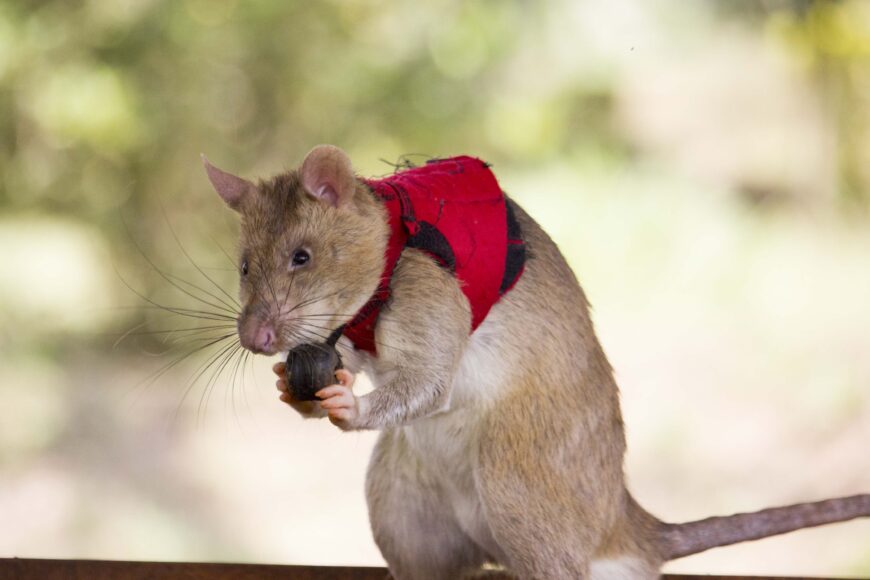Questions for ‘Giant rat border agents could help put a stop to wildlife poaching’

This giant African pouched rat is being trained to signal for illegally smuggled wildlife products. It pulls on a small ball on its collar to alert its handler.
APOPO